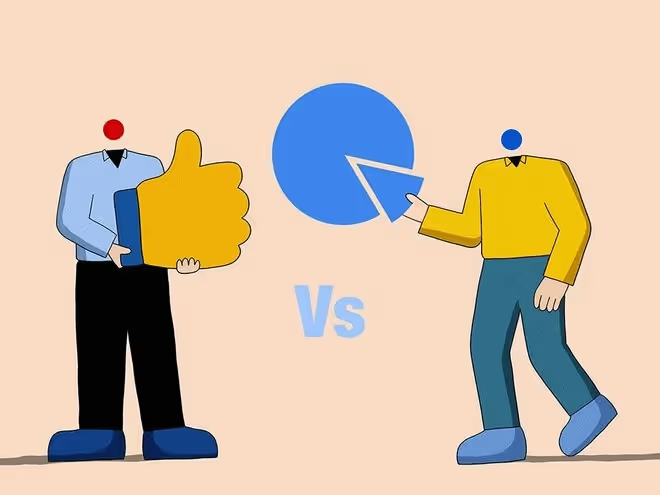Pitch Deck vs Sales Deck: A Complete Guide to Their Purpose, Structure, and Usage
In the dynamic world of business communication, clarity in purpose is crucial, especially when you're presenting ideas to investors or persuading potential clients. Two of the most powerful tools for these goals are the pitch deck and the sales deck. While they may look similar at first glance, each serves a distinct function and targets a different audience. Confusing the two can weaken your message and derail your objectives. Let’s explore the unique roles, elements, and best-use scenarios for both.
Understanding the Core Intent: Vision vs Conversion
The first major distinction lies in the purpose each deck serves. A pitch deck presents the complete story of your business. It aims to win belief and support from investors by outlining the company’s potential for growth, profitability, and long-term success. You’re not selling a product, you’re selling the business itself.
On the other hand, a sales deck zooms in on a specific offering. It focuses on convincing customers to buy into your product or service. Here, the emphasis is on demonstrating tangible value, solving pain points, and guiding the buyer toward a clear action, such as signing up or making a purchase.
Audience Matters: Investors vs Customers

Another key difference is the audience. A pitch deck targets venture capitalists, angel investors, and strategic partners. These individuals are looking for scalable business models, strong financials, and visionary founders with execution capability.
In contrast, sales decks are directed toward potential buyers, whether individuals or B2B decision-makers. These people want to know how your solution fits into their existing challenges and improves their outcomes. They're not interested in your financial projections; they want proof that your product works.
Narrative Structure: Big Picture vs Practical Application
The narrative arc of a pitch deck typically follows a macro-to-micro flow. It starts by highlighting a market opportunity, introduces a pressing problem, proposes a solution, and outlines how your company uniquely addresses the gap. This story is visionary, often ending with financial projections, go-to-market strategies, and a clear request for funding.
In contrast, the sales deck is built around the customer journey. It begins by identifying the customer's specific challenges, then transitions into how your product addresses those issues. It supports this with product demonstrations, testimonials, and benefit-driven examples, culminating in a compelling call to action.
Visual Strategy: Tailoring the Experience
Design plays a significant role in both types of decks, but the emphasis shifts. A pitch deck uses clean charts, traction graphs, and market data visuals to illustrate business potential. It’s more conceptual, with fewer product visuals and more focus on vision, projections, and scalability.
A sales deck, by contrast, is visually rich in product demonstrations, screenshots, and before-and-after examples. The aim is to make the solution feel real and actionable. Visual storytelling helps buyers imagine the impact on their business or life.
Timing and Usage: When to Present Each Deck
Use a pitch deck when you’re raising capital, seeking strategic partnerships, or presenting to startup accelerators. The conversation is future-focused and strategic.
Deploy a sales deck during a prospect meeting, product demo, or sales webinar. Your goal is immediate persuasion and a next-step commitment.
Misusing these decks, for instance, bringing a detailed sales deck to an investor pitch, can dilute your message and fail to meet audience expectations.
Avoiding Common Mistakes: Don’t Mix the Message
One of the most frequent missteps is trying to create a hybrid deck that serves both purposes. This often backfires because it leads to a confusing narrative. Investors might get bogged down in product specs, while customers might be overwhelmed by market charts and funding needs.
Instead, tailor each presentation to its unique purpose and audience. Use shared content (like the problem-solution slide) in a way that supports the deck’s specific angle, but avoid crossing over into irrelevant territory.
Crafting with Strategy: Best Practices to Maximize Impact
- Know your audience: Customize messaging for investors or buyers, depending on the deck.
- Lead with clarity: Ensure the storyline is easy to follow and builds logical momentum.
- Be visual, not verbose: Replace paragraphs with visuals and succinct bullet points.
- Close with purpose: Every deck should end with a specific, actionable request for funding, demo booking, purchase decision, or follow-up.
- Refine through feedback: Test your deck in smaller settings before major presentations.
Final Thoughts
Pitch decks and sales decks may seem similar, but their strategic functions are entirely different. One casts a vision and secures belief in your business; the other builds confidence in your product and leads to conversion. Understanding this distinction and executing it well can elevate your chances of winning both investment and customers. Build both with intention, and you’ll have two of the most powerful assets in your entrepreneurial toolkit.



